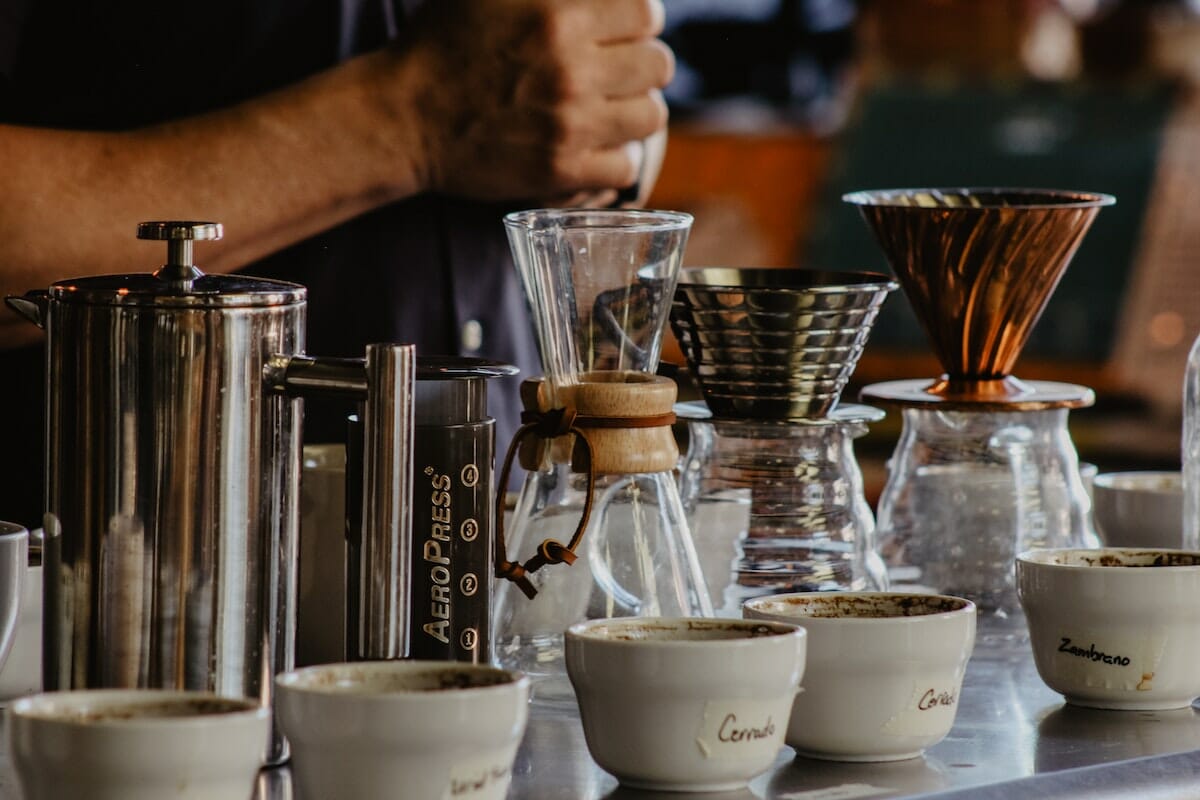Revealing the Scientific Research Behind Different Coffee Brewing Methods and Their Advantages
Revealing the Scientific Research Behind Different Coffee Brewing Methods and Their Advantages
Blog Article
The Science Behind Coffee Brewing: Exactly How Temperature Level and Time Affect Your Beverage
Recognizing the scientific research behind coffee brewing discloses that temperature and time are not plain variables however critical components that dictate the beverage's taste account and general top quality. As we check out the subtleties of these aspects, the concern occurs: just how can one properly equilibrium temperature level and time to attain that best brew?
The Chemistry of Coffee Removal
The chemistry of coffee extraction explores the detailed procedures that change raw coffee beans right into the aromatic drink delighted in worldwide. This improvement largely involves the solubility of various substances existing in the beans, which are influenced by variables such as grind size, water high quality, and the developing method utilized.
During the developing process, warm water works as a solvent, removing soluble substances, consisting of caffeine, sugars, acids, and lipids, from the coffee grounds. Each compound contributes to the flavor account, scent, and body of the last drink. For circumstances, acids are in charge of appetizing and intense notes, while oils add to an abundant mouthfeel.
The initial stages of developing essence acids and sugars, leading to an enjoyable level of acidity, while long term removal can lead to bitterness due to over-extraction of unwanted compounds. Comprehending these chemical communications is vital for maximizing brewing techniques, as the equilibrium between removal time and water temperature level can considerably affect the overall top quality of the coffee.
Ideal Developing Temperatures
Finding the best developing temperature level is crucial for unlocking the full capacity of coffee flavors and scents - coffee brewing methods. Study indicates that the optimum range for developing coffee lies between 195 ° F to 205 ° F(90 ° C to 96 ° C) Within this array, the removal procedure efficiently dissolves the desirable soluble compounds in coffee beans, leading to a tasty and well balanced cup
Developing at reduced temperature levels, such as below 195 ° F(90 ° C ), might lead to under-extraction, producing an acidic and weak brew with muted tastes. Alternatively, brewing at temperatures going beyond 205 ° F(96 ° C) can lead to over-extraction, generating a severe and bitter taste as a result of the extreme dissolution of unwanted substances, such as tannins.
Additionally, the excellent brewing temperature can vary depending on the coffee bean kind and roast level. For example, lighter roasts frequently gain from somewhat higher temperatures to improve their complex flavor profiles, while darker roasts may be much better matched to reduced temperature levels to alleviate bitterness.
Ultimately, maintaining precision in developing temperature levels is important for accomplishing a harmonious balance of flavors, guaranteeing that every cup of coffee provides a satisfying sensory experience.
Effect of Developing Time
Developing time plays a crucial duty in figuring out the flavor profile and general top quality of coffee. The removal procedure, which affects the preference, aroma, and body of the drink, is mostly dependent on how much time the coffee premises are in call with water. Shorter developing times can cause under-extraction, bring about a sour or weak taste, as not nearly enough soluble compounds are dissolved. On the other hand, long term brewing can lead to over-extraction, where unfavorable compounds are launched, leading to an astringent or bitter preference.
Optimum developing time differs relying on the method utilized and the grind size of the coffee. A French press usually needs about 4 minutes, while espresso removal is normally finished within 25 to 30 seconds. It is vital to adjust developing time in combination with various other variables, such as water temperature and coffee-to-water ratio, to attain the preferred taste profile.
Recognizing the influence of brewing time enables coffee lovers to improve their brewing techniques, eventually improving the sensory experience of their cup (coffee brewing methods). With careful interest to this variable, one can unlock the complete possibility of the coffee, revealing its unique attributes and nuances
Developing Techniques and Their Impacts

For circumstances, approaches like French press and cool mixture permit a much longer steeping time, causing a fuller body and durable taste due to raised extraction of oils and soluble solids. Alternatively, espresso developing makes use of high stress and a shorter extraction time, producing a concentrated shot that stresses extreme tastes and an abundant crema.
Pour-over methods, such as Chemex or V60, use an even more regulated removal procedure, allowing the maker to manipulate circulation rate and water circulation, which can improve illumination and clarity. At the same time, percolation approaches cycle water with the coffee grounds numerous times, leading to a stronger, typically bitter flavor.
Last but not least, the usage of paper filters versus steel filters can also affect the last preference; paper filters generally generate a cleaner cup by capturing oils and great fragments, while metal filters allow more oils to travel through, contributing to a fuller mouthfeel - coffee brewing methods. Comprehending these nuances can boost the coffee experience substantially
Tips for Refining Your Mixture
A well-executed brew can transform also the simplest coffee right into an amazing experience. To accomplish this, focus to detail is essential. Beginning with high-quality, freshly baked beans, as their taste profile decreases gradually. Grind the beans just before making to maximize quality, making certain the work dimension matches your brewing method-- coarser for French press and finer for coffee.
Water high quality plays an essential duty; usage filtered water without pollutants. The excellent developing temperature varies between 195 ° F and 205 ° F(90 ° C to 96 ° C ) As well warm can scorch the coffee, while as well awesome might under-extract tastes.
Timing is just as essential. For immersion techniques, steeping for three to 5 minutes is optimal, whereas drip techniques generally take about 5 minutes. Try out brew times to find your recommended strength.

Final Thought
In summary, the complex partnership in between temperature and time is paramount in the coffee developing process. Recognizing these scientific principles encourages people to refine their developing techniques, ultimately leading to a much more well balanced and satisfying coffee experience.
Recognizing the science behind coffee developing exposes that temperature and time are not mere variables however pivotal elements that dictate the beverage's taste account and total top quality. Recognizing these chemical communications is crucial for enhancing developing methods, as the equilibrium in between removal time and water temperature can considerably affect the general quality of the coffee.Developing time plays a pivotal role in identifying the taste profile and overall quality of coffee. By concentrating on these aspects-- bean quality, grind dimension, water temperature, soaking time, and proportion-- you can elevate your coffee brewing process, resulting in a regularly exceptional cup.
In summary, the complex relationship between temperature and time is vital in the coffee developing procedure.
Report this page